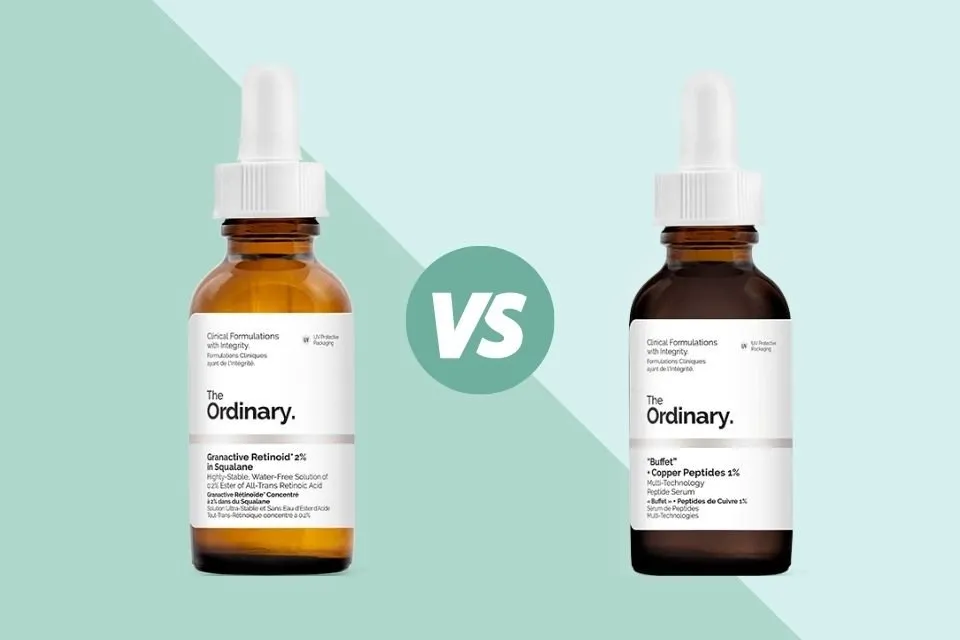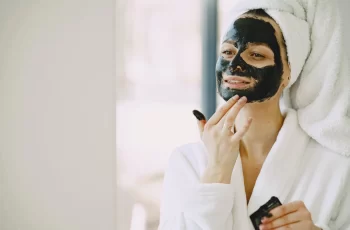
**Can Peptides and Retinol Be Used Together?**
If you’re diving into the world of skincare, it can feel overwhelming to learn about different ingredients like **peptides** and **retinol**, especially when you’re trying to figure out how to layer them in your routine. But don’t worry—let’s break it down and simplify things so you can get the most out of these potent ingredients!
### What Are the Benefits of Peptides for Skin?
**Peptides** are short chains of amino acids, the building blocks of proteins like collagen and elastin. They play a vital role in supporting the skin’s structure and boosting its overall health. Here are some of the key benefits:
– **Reduces the appearance of fine lines and wrinkles**
– **Strengthens the skin barrier**
– **Provides anti-inflammatory properties**
– **Promotes firmer skin**
– **Stimulates collagen production**
– **Helps repair damaged skin**
### What Are the Benefits of Retinol for Skin?
**Retinol** (a form of Vitamin A) is renowned for its powerful effects on skin renewal. Here’s what retinol can do:
– **Fights signs of aging** like fine lines and wrinkles
– **Brightens the complexion**
– **Regulates oily skin** and reduces breakouts
– **Fades dark spots and hyperpigmentation**
– **Improves skin texture and tone**
### Can Peptides and Retinol Be Used Together?
Yes! **Peptides and retinol can absolutely be used together**, but because both are powerful ingredients, it’s important to layer them correctly and give your skin time to adjust.
Here’s the thing: retinol can be quite potent, especially when you’re starting out. It can cause irritation if not used properly, and because it speeds up cell turnover, it can leave skin more sensitive. Peptides, on the other hand, are more gentle and help to **nourish and repair the skin**, making them a great pairing for retinol.
However, because both ingredients penetrate the skin at different depths, using them together requires a little strategy.
### What Order Should Peptides and Retinol Be Applied?
When layering **peptides and retinol**, it’s best to apply **retinol first**, especially in your evening routine. Retinol works by speeding up skin cell turnover, and applying it first ensures that it can penetrate deeply into the skin for maximum efficacy.
Peptides should be applied after retinol to help **nourish and repair** the skin. They act as a buffer to counteract the potential irritation caused by retinol and help keep the skin’s barrier intact, ensuring that your skin doesn’t become overly dry or irritated.
### Can I Use Peptides in the Morning and Retinol in the Evening?
Yes, this is a great approach! In fact, **morning and evening routines** are ideal for these two ingredients because they work with your skin’s natural circadian rhythm.
– **In the morning**, peptides can be used to **boost collagen production**, reduce inflammation, and protect the skin from environmental damage, like UV rays and pollution. Since peptides help repair the skin barrier, they make a great daytime ingredient.
– **In the evening**, retinol works best because it’s during the night that your skin is in repair mode. Retinol helps to **renew skin cells** and reverse damage from the day.
This combination allows you to nourish your skin in the morning with peptides and repair and regenerate overnight with retinol.
### Do I Need to Use SPF with Retinol?
Yes, **retinol increases your skin’s sensitivity to the sun**, which means it’s essential to apply a broad-spectrum sunscreen with SPF 30 or higher every day, even if you’re indoors or it’s cloudy. The skin is more vulnerable to UV damage when using retinol, and sunscreen will help protect the skin and prevent further signs of aging or pigmentation.
### Are Peptides Good for Wrinkles?
Yes, peptides are fantastic for **reducing wrinkles**. They help to stimulate collagen and elastin production in the skin, both of which are essential for keeping skin firm, youthful, and smooth. When applied topically, peptides signal the skin to repair itself and regenerate, which can lead to **firmer, smoother skin** with fewer visible lines and wrinkles.
### What Can Peptides Not Be Mixed With?
Peptides are generally well-tolerated and can be used alongside many ingredients, but **avoid mixing them with Vitamin C** (ascorbic acid). Vitamin C is another powerful ingredient that promotes collagen production, but when combined with peptides, it can **neutralize their effects**, making both ingredients less effective. If you’re using Vitamin C in your routine, it’s best to use it separately from peptides—typically in the morning and peptides at night.
### Can Serums Be Applied Over Retinol?
While it is possible to layer serums over retinol, you should be mindful of the **consistency** of your products. Retinol is often found in **serums, oils**, and **moisturizers**, and you typically want to apply it **as the last step** in your evening routine. However, applying **serums** that are hydrating, like those containing **hyaluronic acid**, can be beneficial to help lock in moisture and prevent excessive dryness or irritation from retinol.
If you want to use multiple serums (e.g., one with retinol and one with hydrating ingredients like hyaluronic acid), it’s best to apply the **retinol serum first**, followed by a more hydrating serum or a moisturizer.
### Final Thoughts on Using Peptides and Retinol Together
In short, **peptides and retinol can work beautifully together**, but they require a little care and attention to how you layer them:
1. **Use retinol in the evening** to renew and repair the skin.
2. **Apply peptides in the morning** to nourish and protect.
3. If you want to layer both in the evening, **apply retinol first**, then peptides to help prevent irritation and dryness.
4. **Always apply sunscreen during the day**, especially when using retinol, to protect your skin.
By understanding the best way to use peptides and retinol, you can maximize their benefits and improve the overall health and appearance of your skin.
If you’re ever in doubt or have specific concerns about your skincare routine, don’t hesitate to consult with a dermatologist or skincare expert for personalized advice.


